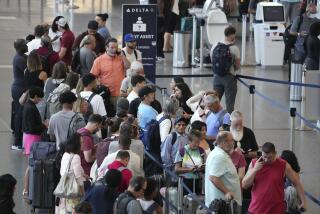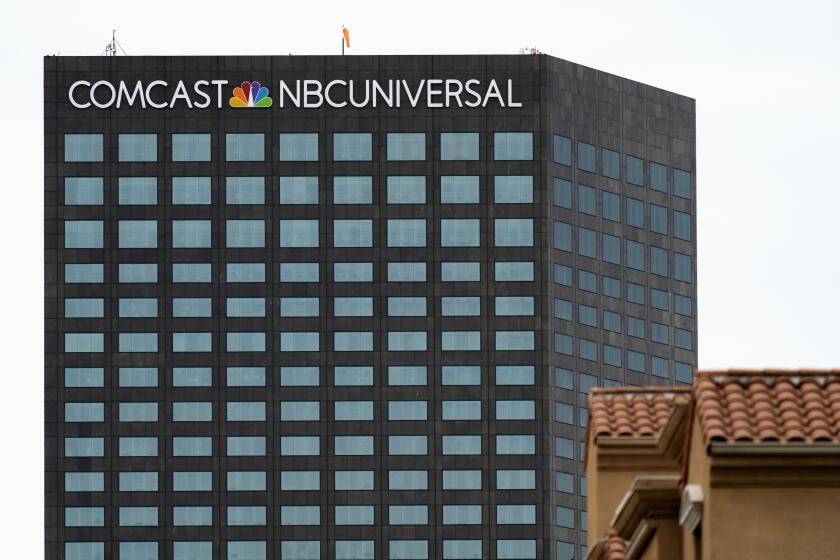‘Polar vortex’ wallops fliers’ wallets
Flights canceled in January’s “polar vortex” inflicted $2.5 billion in costs on stranded travelers, according to a new analysis.
The 49,000 flights canceled last month more than doubled the number halted by Superstorm Sandy in 2012. Snow, sleet and frigid temperatures also led to more than 300,000 delays, according to MasFlight, an aviation operations technology company based in Bethesda, Md.
And two more storms are barreling toward the East Coast. The region is home to the nation’s busiest airspace, where travel snafus ripple throughout the country.
The $2.5-billion figure represents lost productivity, hotel expenses and meals, MasFlight reported. The airline industry lost $75 million to $150 million.
But industry experts say the financial hit from the brutal weather is unlikely to lead to higher fares. Airlines still face strong competition and enjoy stable fuel prices.
The number of flight cancellations may have been higher last month because of two airline regulations enacted in recent years.
Under a rule that took effect in 2010, airlines can be fined as much as $27,500 per passenger for keeping fliers on domestic flights stranded on delayed planes for more than three hours. Starting in 2011, airlines face the same penalty if they leave fliers stranded on international flights for more than four hours.
To avoid the hefty fines, airlines are now more likely to cancel flights during bad weather.
Also, a rule took effect in January that imposes new limits on the amount of time U.S. pilots can be on duty without a rest.
Airlines have also become more proactive in recent years about canceling flights to reduce staffing costs and other expenses, said Jami Counter, senior director for flights at TripAdvisor, the online travel site. But early flight cancellations are also good for passengers, he said, because travelers are less likely to be stuck at an airport if a flight is canceled with advanced warning.
“Airlines have gotten pretty good at weathering the punches they get from irregular operations,” he said.
Still, the weather woes could take a bite out of the bottom line for some of the nation’s biggest airlines.
“They’ll definitely take a financial hit,” Counter said.
Airlines can make back some of those losses if travelers rebook canceled flights, said Henry Harteveldt, an airline industry analyst at Hudson Crossing. Many also have built unexpected delays into their budgets, he said, and have recently enjoyed higher profit margins because of strong demand and stable fuel costs.
“This is not the first time we’ve had bad weather affecting airports,” he said. “Airlines have plans and they factor this in to their financial planning.”
New York-based JetBlue — which halted all departures from New York and Boston airports for 17 hours during a storm in early January — was among the hardest hit. In its most recent earnings report, the airline estimated the impact of the storm delays to be about $30 million.
“That was outside of what we normally budget for winter cancellations,” said JetBlue spokeswoman Jenny Dervin.
More to Read
Inside the business of entertainment
The Wide Shot brings you news, analysis and insights on everything from streaming wars to production — and what it all means for the future.
You may occasionally receive promotional content from the Los Angeles Times.










